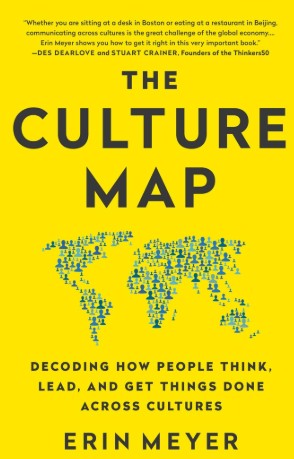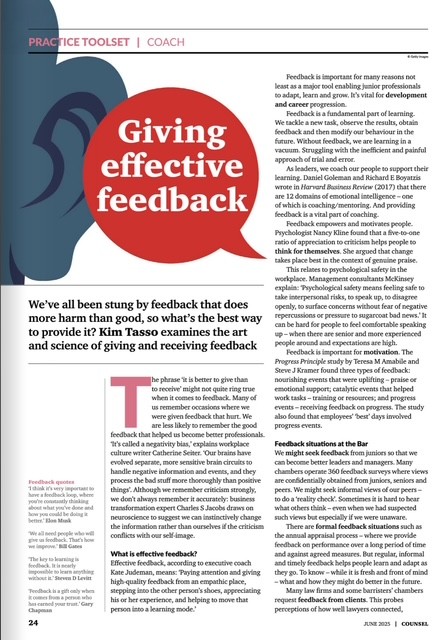
Thanks to Pippa Blakemore for this great and comprehensive review of my recent book “Social media in business development and relationship management: A guide for lawyers”. Further details of the book are available here: https://www.globelawandbusiness.com/special-reports/social-media-in-business-development-and-relationship-management-a-guide-for-lawyers
Social media in business development and relationship management: A guide for lawyers
Social media can be both tantalising and terrifying. Tantalising because it offers so many opportunities to law firms, lawyers and their clients and referrers throughout the world. Terrifying – because, mishandled, it can lead to public embarrassment and humiliation; to intimidation from trolls and finally to the ultimate possibility of losing your job.
Thank goodness, then, for Law Firm Management “Insights”, which has just published Kim Tasso’s, “Social Media in Business Development and Relationship Management: A Guide for Lawyers.”
This special report will be useful to all lawyers and law firms as a comprehensive handbook, whether they are at the start of their engagement with social media, or already use it as an integral part of their sales, marketing and relationship building strategy. It will enable lawyers “to enhance their experience for existing clients, to generate new clients (ie social media selling), or to maintain relationships with referrers and intermediaries” (page 7). It will be an invaluable guide for lawyers who are using social media on their own, in a small firm, or those in a larger firm with the support of their internal or external marketing and PR professionals. The report is written in an encouraging way, as it gives the feeling that social media is manageable – wherever you are on the social-media-usage-fear-spectrum.
The author, Kim Tasso’s long experience of working with lawyers underpins this report, which is supported by thoroughly researched information, enhanced by detailed social media references and buttressed by recommendations for books to read. This means that it can either be read from the front page to the back, for those who feel they want a well-informed, logically constructed path towards detailed understanding of how to maximise the opportunities offered by social media in business development. At the same time, it can be dipped into, at any page, for those who want to confirm that their approach is correct or who wish to find more detailed enlightenment on specific topics.
The special report’s appearance, structure and presentation make it easy to handle, read and absorb. Key quotes, over a full page or half a page, emphasise particularly important messages. The soft cover; the large margins; clear headings and sub-headings; short paragraphs and bullet points, displayed in plenty of white space give the feeling of a succinctly light touch, while being substantial and relevant.
The table of contents is logical and detailed. As the report progresses, the vocabulary becomes increasingly social-media-intensive, reflecting the reader’s increasing knowledge, and enabling a lawyer to talk with authority to the marketing and PR teams. The presentation of content is excellent: it reflects the way in which social media should be managed “Social media users like reading checklists and pragmatic advice – bite-sized pieces of content …” (page 98). It is a by-your-side checklist for all the key aspects of social media.
Social media is not a stand-alone marketing tool. It should be one of many sales and marketing methods used to target audiences, sectors and individuals, using a range of content and a multiplicity of communication channels. It needs to be part of an overall, firm wide or individual, marketing, sales and communication strategy. This point was well illustrated by a social media award added to the Managing Partner Forum management excellent awards, in 2013. “It was subsequently removed as an award category in 2017, as people believed that it was not appropriate to consider social media in isolation from integrated marketing, thought leadership and business development campaigns.” (page 12).
The report elucidates the complexities of integrating the social media plan with a firm’s overall strategy as well as marketing strategy, across different practice groups, jurisdictions, regions and offices, all the while maintaining a common brand.
For law firms that are about to embark on social media, there is the excellent section on “Developing a Plan” (pages 33 – 45) which comprehensively guides Business Development/Marketing and/or lawyers through the important considerations and key elements of setting up and establishing a long-term social media policy, as part of achieving the vision, strategy, goals of the whole firm.
For those who already have set up a social media policy this is a comprehensive and user-friendly checklist to ensure that every aspect is covered. A plan needs to be implemented and managed and the section “Central Management” (pages 103 – 118) comprehensively covers the key aspects of this requirement: personal and digital.
Creating the appropriate message for each person and using their preferred method of communication is one of the keys to success. The section on segmenting/analysing/evaluating/categorising, targeting and messaging the clients, prospects or referrers with whom you want to communicate is enlightening. (pages 42-44).
To make your social media strategy the most effective, it is essential that this analysis takes place and that common problems, interests, needs and requirements are identified. These can then be addressed by you, so that the people in your target audience feel that you truly understand the challenges they face, because your communication is bespoke. The winning theme for any marketing message, whatever digital channel, is maximum personalisation and relevance.
The first step is the hardest. It is important to get a feel for social media “before you jump in.” One source of helpful information is “ … what other business people, professionals and lawyers are doing.” (page 47). In addition, it is also helpful in understanding your target markets and segments, to have a look at what your current clients, target clients, referrers, intermediaries and ambassadors are doing in their social media, because they may be disseminating their content, in the way that they would like to receive their communications.
The platform you use and how you use it, are key to maximising the return on investment of time, money and energy. The special report gives an outstanding analysis, description, definition, set-up and uses of each of the main platforms which are currently relevant to lawyers: for example, LinkedIn, Twitter, and Facebook.
There is an excellent section on effective and readable blogging (pages 83 – 95). The report streamlines and highlights how to get the best out of each and gives tips on approach, structure and content. It also gives a wonderfully comprehensive guide on “overview of common social media platforms” and for those who are not familiar with social media. It will be an eye-opening guide to words you have heard but didn’t know what they really meant.
The report gives a rich source of ideas on creating content and also some very helpful, time-saving tips on using external resources, consultancies and advisers. These can range from advice on the strategic approach to actually writing articles and blogs for you and the firm, which can be personalised and amended and then can be uploaded by you.
The special report gives a summary on managing the risks of social media and the practical suggestions on systems for cross-checking and monitoring content within a law firm, are simple but effective. The uniquely terrifying aspects of digital media are that many millions could see something you have posted in seconds, around the world; that once something is issued it can never be removed, because even in a split second it can be screenshot; once it is out there, you cannot take it back – ever; that different audiences and individuals may have a completely different perceptions and interpretations of what you have said from what you actually meant. So strict guidelines, monitoring and control are vital.
Return on investment in social media is difficult to measure. However, the case studies in this report do make it uniquely helpful to understand how to plan, implement and make the best of it. The case studies are a demonstration of its creative, flexible and dexterous use. “Case study: digital marketing at Forsters” (pages 114 – 118), demonstrates that it is possible to measure return on investment in social media and the Case study: digital marketing at Wollen Michelmore quantifies in fee-income, the return on investment. (Page 81).
The requirement for constant flexibility and adaptability to the changing nature of social media is encapsulated in “Case study: content creation at Clutton Cox” (pages 100-102) which gives examples of some headline grabbing activities, which are relevant to the target market. The “Case study: Twitter use at Inksters” is a wonderfully open account of how Twitter was adapted and developed and came up with “Campaigns – hats, fringe comedy and sheep” with some wonderful examples of the importance of generating curiosity, interest and participation. (page 74 – 76).
This report is the one to accompany you on the constantly changing path to social media participation as part of your Business Development and Relationship Management.
Pippa Blakemore has been advising lawyers and law firms all over the world on how to win, keep and grow clients for more than 33 years. Pippa has written the popular book: “Networking for Lawyers: a pocket guide to building business relationships” (available from www.pep-partnership.co.uk). She has also written: “Law Firm Pitches & Tenders: Presenting to Win” published by Worldwide Legal Research” (http://www.legal-monitor.com/pitches-and-tenders). For further information contact Pippa on: pippa.blakemore@pep-partnership.co.uk
Other reviews can be seen here: http://kimtasso.com/social-media-in-business-development-a-guide-for-lawyers/









